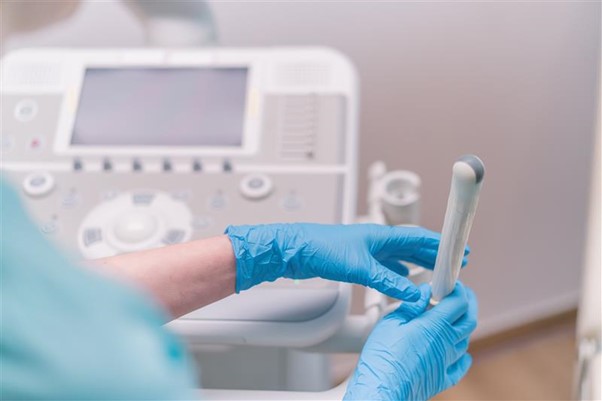Transvaginal sonography is a special type of ultrasound test. It helps doctors see inside a woman’s pelvis. This test uses sound waves to create pictures of organs like the uterus and ovaries. Many women have questions about transvaginal sonography. In this guide, you will learn what it is, why it is done, and what to expect.
What is Transvaginal Sonography?
Transvaginal sonography, also called a transvaginal ultrasound, is a safe imaging test. It uses a small device called a probe. The probe goes gently into the vagina. Then, it sends out sound waves. These waves bounce off organs and create clear images on a screen. Because the probe is close to the organs, the pictures are very detailed. This test is often used in gynaecology to check for problems inside the pelvis.
Why is Transvaginal Sonography Performed?
Doctors use transvaginal sonography for many reasons. For example, it can help find the cause of pelvic pain or unusual bleeding. It is also used to:Check for ovarian cysts or tumorsLook for fibroids in the uterusMonitor early pregnancyFind the cause of infertilityDetect ectopic pregnancy (when a pregnancy grows outside the uterus)
Sometimes, this test is part of a routine check-up if you have certain symptoms. In addition, it helps doctors plan the best treatment for you.
How is the Procedure Done?
First, you will be asked to lie down on an exam table. Next, the doctor or technician will cover the probe with a thin, protective cover. They will also put a small amount of gel on it. Then, the probe is gently inserted into the vagina. This usually does not hurt, but you may feel some pressure. The probe sends images to a computer screen. The whole test usually takes about 15 to 30 minutes. After the test, the probe is removed, and you can get dressed right away.
What to Expect During and After the Test
During the test, you may feel a little discomfort, but it should not be painful. If you feel pain, let the doctor know right away. After the test, you can go back to your normal activities. There is no recovery time needed. Most women do not have any side effects. However, if you notice heavy bleeding or severe pain later, contact your doctor.
Benefits and Risks
Transvaginal sonography has many benefits. For instance, it gives clear images of pelvic organs. It is safe and does not use radiation. Also, it helps doctors find problems early. However, like any test, there are some risks. Rarely, you may feel mild discomfort or have light spotting. Serious problems are very uncommon. According to the World Health Organization, ultrasound tests are safe for most women.
Preparation Tips
Preparing for transvaginal sonography is simple. Here are some helpful tips:Usually, you do not need a full bladder for this testWear comfortable clothes for easy changingTell your doctor if you are pregnant or have allergiesAsk any questions before the test starts
Sometimes, your doctor may give you special instructions. Always follow their advice for the best results.
Frequently Asked Questions
Is transvaginal sonography safe? Yes, it is very safe and does not use harmful radiation.Will it hurt? Most women feel only mild pressure. If you feel pain, tell your doctor.How long does the test take? The test usually takes 15 to 30 minutes.Can I have this test during my period? Yes, but let your doctor know if you are on your period.When will I get my results? Often, your doctor will discuss the results soon after the test.
Transvaginal sonography is a helpful tool for women’s health. It is safe, quick, and gives important information. If you have questions or concerns, consult a gynaecologist for personalized advice on transvaginal sonography.

